Menu
We asked our spinal experts at BackPain.online to answer some frequently asked questions about back pain. Toby, a registered osteopath in the UK who co-founded BackPain.online with his colleague Graeme Rider takes us through answers to questions we regularly hear and some helpful tips for back pain relief.
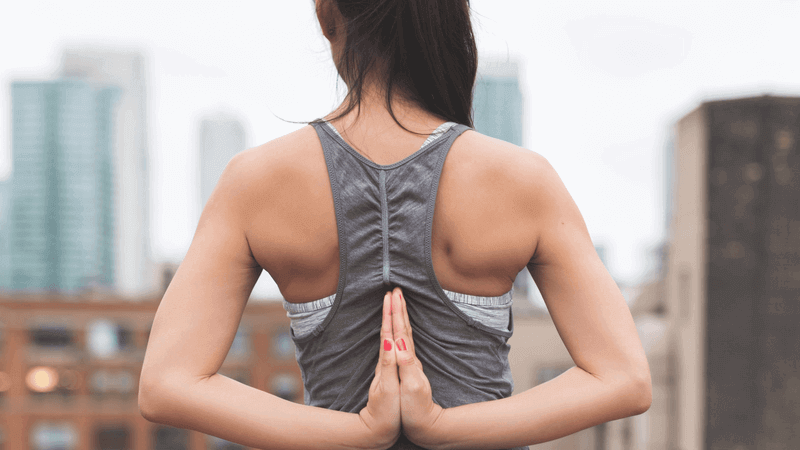
Let's face it; most people take an absence of back pain for granted. Whenever the pain starts to develop, that's when they notice how it can impact their lives! Patients come into the clinic with their first episode and promise that they will never again take the mick out of anyone else who complains of back pain!
We also see vicious circles. People want to live a healthy and active life, but back pain hinders them from doing what they want and prevent them from taking steps to regain control.
Severe back pain can be terrible. It can prevent people from completing 'normal' tasks and can even develop into a disability. Their sense of control is lost as their back pain takes over their lives, which is why it's essential to avoid letting it get to that stage!
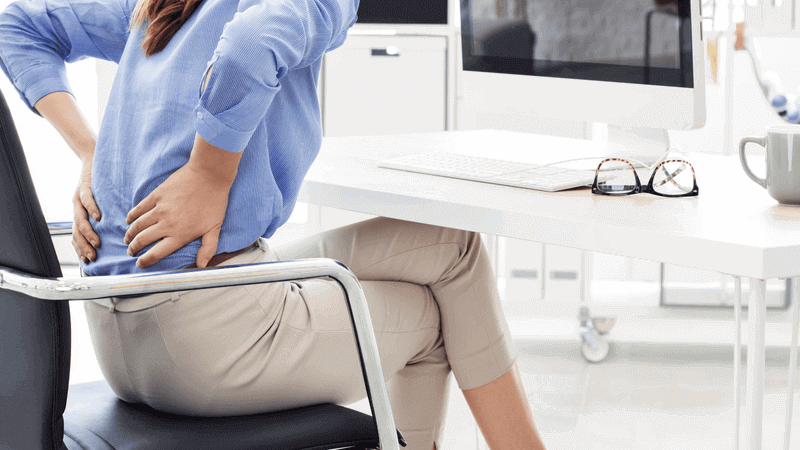
On its own, not much.
There are many different causes of low back pain, some of which are very serious, and some are trivial. People must seek advice from qualified experts for back pain relief.
Getting reassurance that they have a trivial issue can be massively helpful.
On the other hand, knowing that back pain might be more serious can help people take the right action sooner rather than later.
Some cases of low back pain can settle in a few days, while others can be more prolonged.
Understanding what sort of injury a patient has is massively important, especially for the patient. Some conditions are harmless but slow to heal, so they must understand this so that they don't worry.
Other conditions will remain with the patient for a long time, so it's also crucial that they understand how best to manage it themselves.
Finally, some back pain cases have nothing to do with the machinery of the back, and it's super important that these cases get referred to the right specialist.
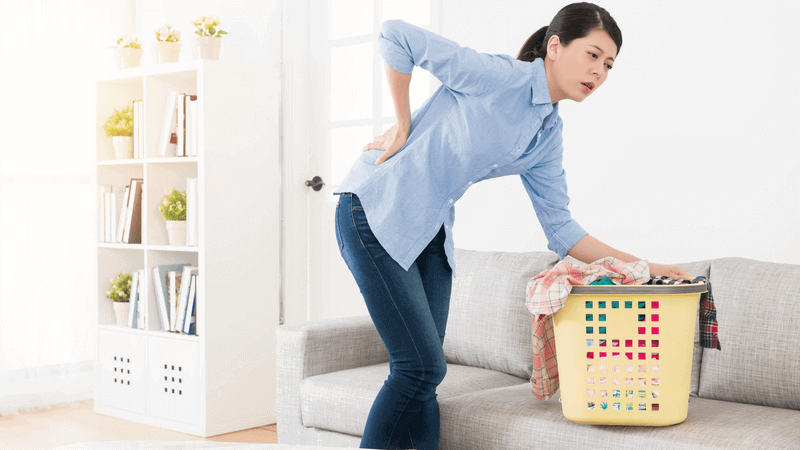
If we're going to look at one significant cause of back pain, it would be moving in multiple directions.
Our bodies are pretty good at bending forwards and backward. We're also good at bending side to side. We can also rotate well.
When people try to combine these movements, bending forwards while also leaning to the side and rotating a little, this is when the likelihood of injury goes up a little. Add load to this, such as picking something up or pushing something, and the chance of injury goes up a little further, probably because people lose their balance slightly as they do the movement. They might do something similar multiple times a day, but if they get distracted on one occasion, turn their head and lose their balance, this is perhaps when injuries are slightly more likely to occur.
However, we mustn't make people over-vigilant about their movements - we mustn't scare people into doing what they want or need to do. They will most likely achieve what they need, and that's just fine as it is just a reflection of what people say when I see them in the clinic. i.e., after they've hurt their back. I don't see them when they've done all sorts of things that don't hurt their back.
We need to dispel the notion that our backs are fragile because they're not! They're made of big, strong bones, tight ligaments, and strong muscles to limit and control their movement.
Backs can, however, become very sensitive to even a relatively slight injury. But this is only a reflection of how important they are on how we move.
Let's teach everyone to forget the famous phrase "my back feels fragile" and instead say, "my back is a little sensitive."
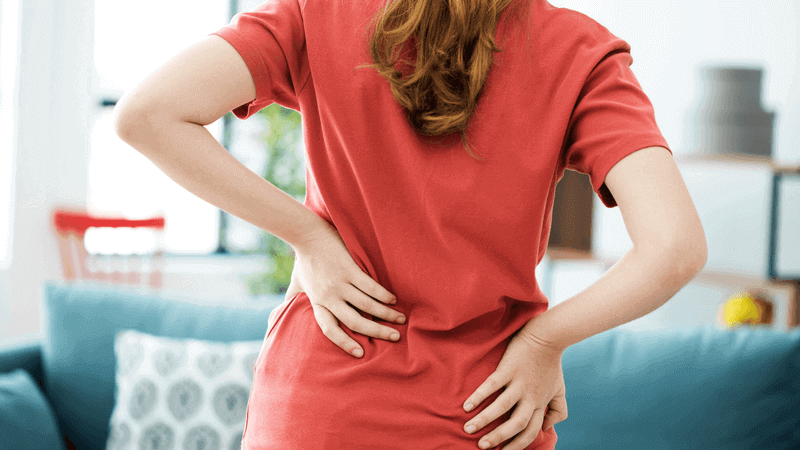
No, it's not.
Most cases of back pain settle very well, even without much intervention.
The job of therapists like us is to speed up the process if possible, teach patients how to contribute to their recovery, and spot cases that are more serious and require other intervention.
Some people might feel that they are always suffering, but we can typically find things that help them feel better, even for a short period. In these cases, it is up to the patient to make time for the things that help them, so they start to accept that their back pain fluctuates. Find time for health, or find time for disease, as a wise person once said.
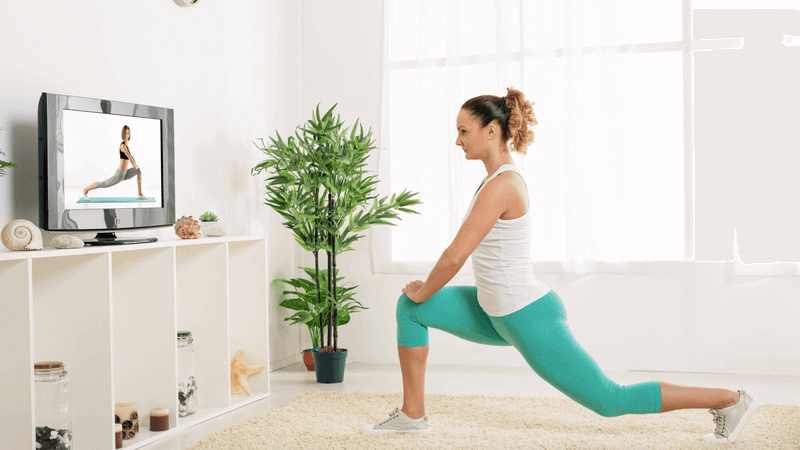
Patients can use heat or ice for back pain relief.
They can also do some exercises to help mobilize their back or strengthen muscles.
General exercise helps people, but not everyone with back pain is really into exercising. Keep in mind that getting enough rest is also essential.
Mindfulness and meditation can help people, as well as counseling. Stress can play a big part in creating back pain for people.
Having a healthy diet and getting good sleep are also valuable steps to take!
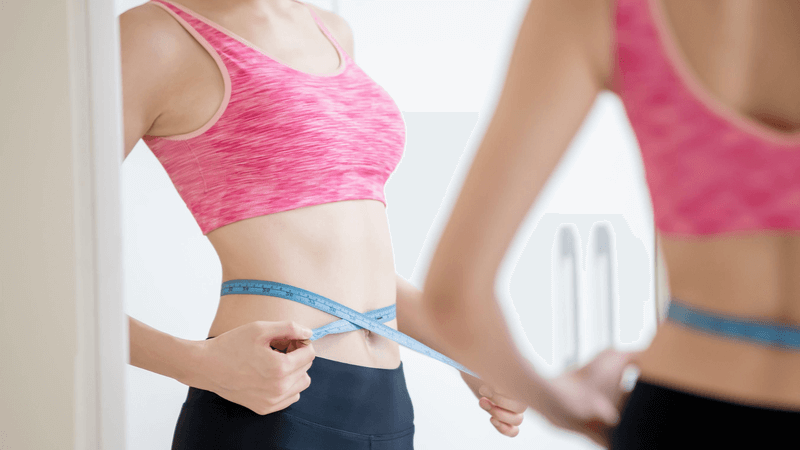
Excess weight can contribute to some types of back pain, primarily when related to any underlying osteoarthritic changes (wear and tear). But usually, there are other factors at play as well, such as lack of exercise, poor diet, and sleep, not to mention accidental causes.
When it comes to recovering from back pain, excess weight can be slow progress. It's a modifiable factor, so that's something patients should consider. Even small weight losses can help, and they assist in kickstarting a health drive with more exercise and better sleep.
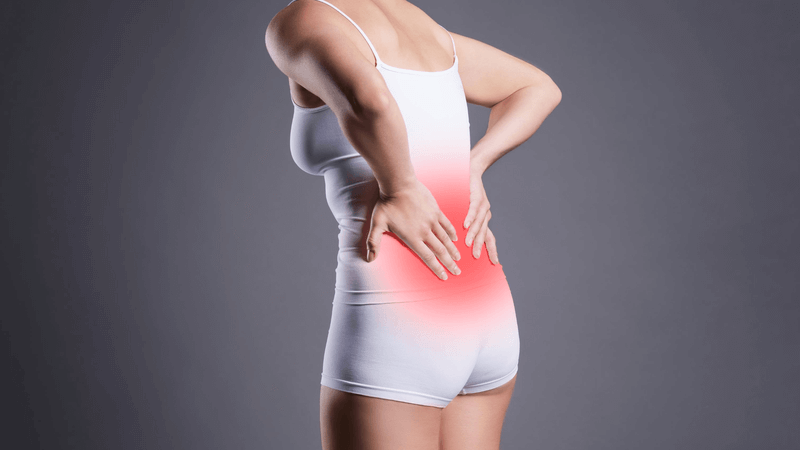
Here's an excellent analogy we use.
Most of the time that we feel pain, it is an inflammatory reaction to something irritated or damaged. Inflammation is how our body heals things.
Inflammation is like the gas that cooks your dinner.
It needs to be powered on so that your dinner gets cooked - that's why we need inflammation to heal things!
But if your hob is powered on too high, then your pot boils over, and your dinner might get burnt. So you have to turn it down. When inflammation is too high, the pain is intolerable for the patient. So you want to turn the hob down and cool it. That's when you need to use ice. You can also take anti-inflammatories as they slow the process down.
If you turn the hob down too much, the gas is too low, and your dinner will never get cooked.
When a patient gets to this stage, we check they're not using anti-inflammatories anymore, as these will slow down the healing too much. We might then suggest some heat to warm things up again and promote a little more healing.

Finding the best sleeping position can be tricky.
Generally, we would say that lying on your back, with legs supported, so your knees are lifted, and a small pillow under your head is the best position to be. We recommend it to people who are struggling, but we suggest them to lie like this for a few periods during the day.
Getting enough sleep is also a different matter.
Overall, the most important thing is to get good-quality sleep, and the position you're in should be secondary to this.
Certain groups of back pain sufferers won't like lying on their tummy, and lots of people sleep well on their sides.
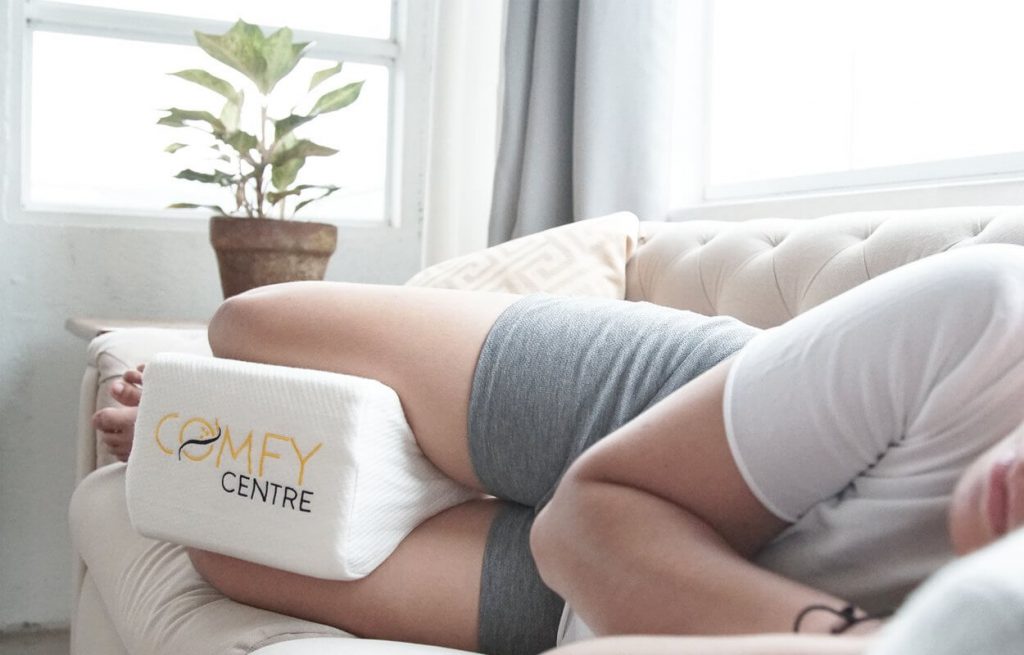
For those side-sleepers, a knee pillow can be valuable. Most people have a pelvis wider than their knees, so lying on their side creates a downslope of the top leg. This position can put a slight strain on some muscles and even irritate some of the lower back and pelvis joints during the night.
A knee pillow helps keep that top leg level, reducing the strain that the patient feels.
Some people struggle to get used to them, but others find they are crucial in getting some good sleep, so they are well worth trying.

Nowadays, it is a big question, especially with more people working from home, due to the COVID pandemic.
The big thing for us is the movement. We need to keep moving, as this will prevent pain from building up. There is no link between any posture and the creation of back pain, regardless of how unhealthy a posture might look. We need to be able to bend our spines in every direction, so sitting in any individual position won't necessarily cause pain, but failing will.
We're big advocates of "active" sitting, which involves people learning to sit with a neutral spine. By neutral, we mean that your spine should be the same shape as when standing up tall.
The biggest hindrance to this is having knees too high relative to your hips, as this tips your pelvis backward and makes you curl your spine forwards to get your head back on top of your bottom.
So we like people sitting slightly higher, and learning to move their spine in every direction. This training is included in everyone's therapy programs, and we also have some useful information about maintaining a healthy back when working from home.
It would take some practice, but we think it's vital. You can still get pain in your back if you sit still like this for too long, but if you know how to move your spine around, give it a wiggle and a stretch, you're going to feel better and experience excellent benefits for back pain relief.
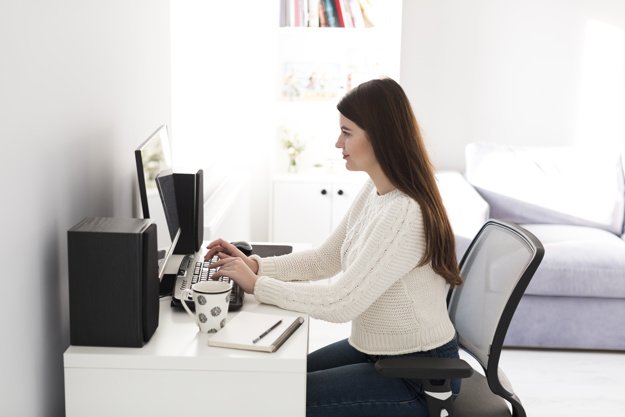
Lumbar pillows can help remind people to keep the right shape in their spine base, not rolling their pelvis too far backward. But there's still a little bit of learning to do.
A seat cushion can help raise people and give them good contact under their buttocks, so they're aware of their shape.
So both can be good, but we think that giving people an extra layer of education and practice helps people cope better.